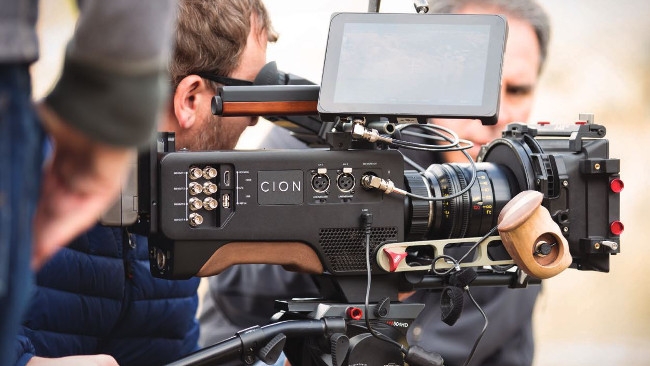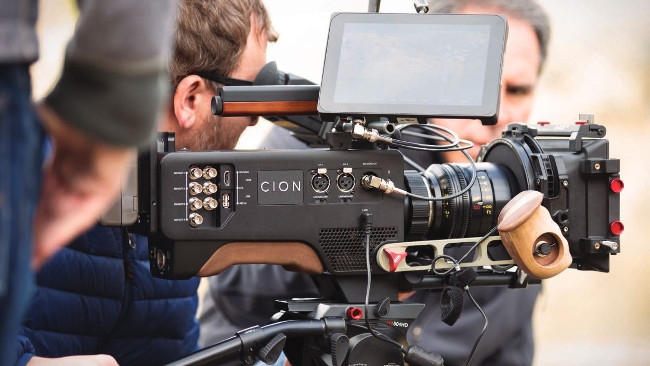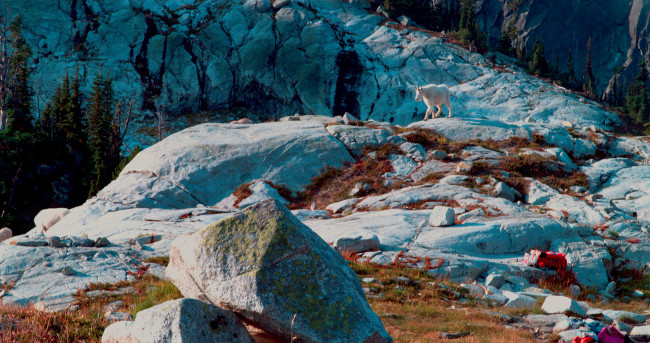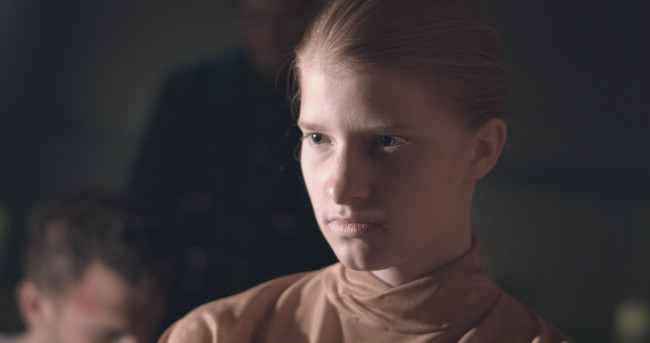
 AJA Cion in Production
AJA Cion in Production
Here's another review of the AJA Cion, with a twist - Rakesh Malik examines how it actually performs in real world productions (spoiler: he liked a hire unit so much he placed an order).
AJA's first ever camera landed amid a crowded landscape of inexpensive cameras with stellar image quality. On the surface, Blackmagic's 4.6K sensor announcement at NAB 2015 seemed like it might spell the end of the Cion, rendering it essentially irrelevant.
Most of the reviewers who have tested the Cion so far haven't used it in production. In fact, most evaluations of it have been based on YouTube videos and its 12-stop dynamic range. I have personally encountered some folks who even chose a GH4 over a Cion partly because of the dynamic range, passing judgment based on a YouTube video viewed over a slow internet connection.
This review is based on using a Cion in production and post on several short film projects.
Ergonomics
One of the biggest differentiators between cameras these days is their ergonomics: how easily the controls are to operate, how well it balances for use on the shoulder and on supports and how well it fits into a production workflow.
The first thing one notices about the Cion is that it's clearly designed for on-the-shoulder use. Its body follows the design of the Super 16 film cameras as far as its shape and weight distribution. It has Arri-style rosettes on both sides at the bottom front of the camera body and a broad array of connections on the assistant's side of the camera. The operator side has a small display with a set of buttons and a knob for menus, plus audio meters with retractable control knobs for gain. On top is a headphone jack and a retractable knob for headphone gain, just in front of the media slot.
The included handle is a mixed bag. It's elegant with its wood trim, with a heavy-duty base secured in place with four hex bolts. The handle includes a 15mm rod clamp and a lanc collar. It's very solid, but also very bulky. It also blocks access to the back focus control, hidden under a small door above the lens mount.
The menu system takes a bit of getting used to. It has a set of five buttons plus a knob that doubles as a button. The config menu is huge, making it a bit of a chore to navigate, but it contains settings that should be largely configured once and left alone for the most part. The rest of the menus are much smaller. There's one menu each for media, frame rate, format, exposure and white balance. With just four buttons, the shooting setting menus are easy to navigate. Once you get used to turning the knob to scroll through menu items and pressing the knob to select an entry, it becomes relatively straightforward to use.
Above the small monitor is a set of buttons for playback – essentially a set of standard transport controls. You turn the knob to scroll through recorded clips on the current media card.
The display on the small monitor on the side isn't suitable for much beyond framing, but it's been useful for the director to see the shot when operating handheld during shoots when we didn't have an external monitor set up.
There are also some connections on top, one P-tap for power and an HDMI port. On the back, there is an XLR power connector, an ethernet port and a Thunderbolt port.
Required Accessories
The Cion is sold as a body only, so you will need to add some accessories to make it work.
You'll need a good viewfinder or field monitor. I went with a SmallHD 502 with a SideFinder. I added a P-tap power adapter, so that I wouldn't need to use batteries, and run an SDI connection to the viewfinder. If you plan on using a Cion handheld, you'll need an EVF mount as well. AJA's EVF mount is definitely not recommended. It's fiddly, awkward and doesn't have enough length to put an EVF far enough forward to balance the camera on your shoulder. I ended up replacing it with a Wooden Camera UVF mount, which addressed both of these issues, while also reducing bulk. I also ended up replacing the top handle with a Wooden Camera handle, which is considerably smaller and lighter than AJA's, doesn't obscure the plate covering the backfocus control and has a quick release NATO safety rail.
While the XLR power connector on the back is enough to power the camera, being tethered to a wall is generally not preferable. There is a removable plate with a Molex connector intended for battery adapters located above the rear ports. I went with a sliding V-mount plate from Wooden Camera, but there are quite a few options.
Adding handles via the built in rosettes is easy as well and certainly required for handheld use, optional otherwise. For follow focus, you'll need a rod mount and some rods. There are a variety of these out there. I went with a Zacuto mini baseplate.
The First Experiences
I demoed a Cion from Keycode Media, one of the local AJA resellers in Seattle. They let me take a full kit with me for nearly a week so that I could shoot with it in a variety conditions. The demo came with an MTF Canon mount and a Canon-mount 25mm Zeiss CP.2 lens, plus recording media.
To try it out, I set the demo Cion up on a tripod pointed out the back door of my apartment. This is a shot that has a lot of foreground clutter (the massive stadium lights near my balcony), but is otherwise a great view of Mount Rainier.
I must say that my first shot was quite disappointing. The camera wouldn't allow me to select ProRes 444 for recording, the Shogun didn't like the feed from any monitor output unless I set it to UHD and ProRes HQ and the images had a lot of noise in the shadows and rather unpleasant color in the highlights.
Not a good way to start… until I realized that the demo camera still had the original release firmware. I decided, naturally, to update it.
You update the firmware via the built-in browser interface, so this also doubled as an opportunity to try that out. It's organized the same way as the menu on the camera, with a tab for each button, leading to the same organization, but where you can see all of the settings at once. The update process is quite simple; all you need to do is select the firmware update control, navigate to the firmware file downloaded from AJA's support site and give it a few seconds.
The result was shocking. I now had access to ProRes444 and, when I captured some images of Mount Rainier from my porch again, I discovered that the displeasing highlight color shift was gone, along with most of the shadow noise.

I took the camera down to Alki Beach where I'd have a foreground to work with and set about shooting some scenic imagery. I used the flat gamma setting and the lowest ISO available. The only thing that ended up clipping was the sun and the sparkles of sunlight scintillating across the waves. When I opened the footage up in Scratch, I was pleasantly surprised. The highlights had a smooth, golden look to them and, with a little tweaking, I discovered impressive detail in the shadows. Shortly before returning the camera, I filmed a short interview using it, this time with the color correction setting on “skin tones” instead of flat. The footage looked excellent…so I went ahead and placed my order.
In Production
The Cion has been great to use in production. I have been working with it on sticks, jib, slider and handheld. For some interviews, I use a Rode Filmmaker Kit plus a studio mic on phantom power, both connected to XLR inputs on the camera. For short films when I'm working with a sound team, I'm using a TentacleSync box. We jam sync the TentacleSync from my Sound Devices 633 mixer/recorder and connect the TentacleSync box to the Cion via the timecode port. On the Cion, there is a setting for external timecode in the config menu. Using this approach, syncing in Scratch or Resolve 12 takes a matter of seconds and has been very reliable.
The quality of the internal recorder is quite good. The integrated preamps are clean and noise-free, offering a reasonable amount of gain, enough for a lavaliere and a closely placed mic.
A single 90wh BlueShape battery is enough to power the camera and 502 for approximately 2 1/2 hours. This makes it fairly easy to keep the camera running for a day of basic production work with just two batteries, since it only takes around 90 minutes to recharge one of those batteries using BlueShape's travel v-mount charger. Adding a Paralynx Triton and a Red Rock Micro wireless follow focus lowers that to somewhat less than two hours, making at least one additional battery essential.
The camera has a narrow selection of ISO settings available, from 320, 500, 800 and 1000. While the signal is still clean at ISO 800 and 1000, the Expanded 1 gamma setting is only available at ISO 320 and 500, so there is definitely less dynamic range available at high gain settings.
One thing to watch our for when shooting on a Cion is highlights. AJA chose to use linear encoding rather than logarithmic, so it doesn't have a highlight shoulder, but it also retains a lot of detail…until it clips. Once it clips, it clips like slide film does, which it to say, poorly.
In other words, to get the best from a Cion, protect the highlights.

There is a lot of detail throughout the exposure range, so recovering detail from the shadows works quite well.
Image Settings
AJA designed the Cion with a look in mind. Rather than making post production color grading a requirement, AJA chose to make it optional. Using the Normal and NormalExpanded settings, the results look quite good with very little post work, useful for projects intended for a short turnaround. Similarly, there is a color correction setting. In my work, I have been using the Skin Tones settings for short turnaround projects and Flat for ones where we plan for color grading in post. For the latter, I prefer to use the Expanded 1 gamma setting as well, as it maximizes the dynamic range in the final image. Recording in 12-bit ProRes444 leads to huge files, but with phenomenal detail and latitude for color grading.
Image Quality and Post Production
Naturally, the most important factor in choosing a camera is the quality of the final image.
In this, the Cion has performed wonderfully. The images have a look that I've come to expect from Fujichrome and Kodak Vision III, with plenty of fine detail yet without the harsh digital look that turns so many off from digital imaging.
In the normal, delivery-oriented settings, the colors look excellent, but in high contrast situations, the normal settings can be pretty limiting since they are high in contrast. Including the Expanded 1 settings was a good choice, since it gives the cinematographer and colorist a lot more flexibility to craft the final look, both by enabling more latitude to handle higher contrast situations and by giving the colorist a very malleable final image.
When working with Cion footage recorded with the Expanded 1 gamma setting in Scratch, I've found that I often get the most latitude when I use Scene Linear, while in most cases the Linear/sRGB setting gives me all the latitude I need.
Conclusion
In skilled hands, the Cion delivers excellent image quality. Instead of aiming mainly for specs, AJA made the camera's look the driver in choice of sensor, OLPF and image processing. The ergonomics are very good as well, making it a great cinema production camera. It requires a bit more care in production than some cameras, but also includes looks that save on post work for short turnaround projects. The main disadvantage in the Cion's inability to record raw internally is that ProRes444 is quite a bit larger than raw in the same resolution, so it's quite a disk space hog.
While AJA launched the Cion into the face of stiff competition, the competition is continuing to advance rapidly. With the imminent 4.6K sensors from Blackmagic and the upcoming Red Raven, AJA definitely will need to be on its game in order to continue to establish itself as a camera maker.
Tags: Production


Comments